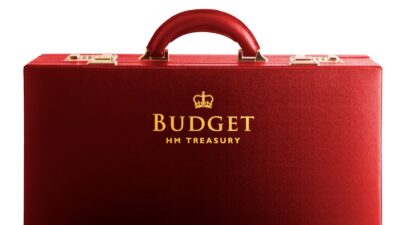Every quarter I take a look at the top FTSE 100 companies in each of the index’s 10 industries to see how they shape up as a potential starter portfolio. The table below shows the 10 industry heavyweights and their valuations based on forecast 12-month price-to-earnings (P/E) ratios and dividend yields.
| Company | Industry | Share price (p) | P/E | Yield (%) |
| BAE Systems | Industrials | 482 | 10.6 | 4.9 |
| British American Tobacco | Consumer Goods | 3,181 | 10.0 | 6.6 |
| GlaxoSmithKline | Health Care | 1,598 | 14.4 | 5.0 |
| HSBC | Financials | 623 | 11.3 | 6.3 |
| National Grid | Utilities | 851 | 14.6 | 5.7 |
| Rio Tinto | Basic Materials | 4,469 | 10.8 | 5.6 |
| Royal Dutch Shell | Oil & Gas | 2,428 | 11.3 | 5.9 |
| Sage | Technology | 701 | 22.5 | 2.5 |
| Tesco | Consumer Services | 232 | 13.6 | 3.2 |
| Vodafone (LSE: VOD) | Telecommunications | 140 | 14.1 | 9.1 |
Before looking at individual companies, let’s get a feel for overall value. The table below shows average P/Es and yields for the group as a whole for the last four quarters and six years.
| P/E | Yield (%) | |
| April 2019 | 13.3 | 5.5 |
| January 2019 | 12.3 | 5.9 |
| October 2018 | 13.3 | 5.3 |
| July 2018 | 14.7 | 4.8 |
| April 2018 | 14.2 | 5.0 |
| April 2017 | 16.8 | 4.6 |
| April 2016 | 16.4 | 5.0 |
| April 2015 | 14.9 | 4.8 |
| April 2014 | 12.8 | 4.6 |
| April 2013 | 12.4 | 4.4 |
My rule of thumb is that an average P/E below 10 is bargain territory, 10-14 is good value and above 14 starts to move towards expensive. As you can see, although the group’s P/E has increased since last quarter, it remains in my ‘good value’ territory at 13.3.
Should you invest £1,000 in M&G right now?
When investing expert Mark Rogers has a stock tip, it can pay to listen. After all, the flagship Motley Fool Share Advisor newsletter he has run for nearly a decade has provided thousands of paying members with top stock recommendations from the UK and US markets. And right now, Mark thinks there are 6 standout stocks that investors should consider buying. Want to see if M&G made the list?
With the exception of Sage, I’d be happy to buy this diverse group of industry heavyweights today, and tuck them away in a Stocks and Shares ISA as a starter portfolio of core long-term holdings.
I’m erring on the side of caution in seeing Sage — with its P/E of 22.5 and 2.5% dividend yield — as one to avoid at this stage. However, many of my Foolish colleagues are positive on the stock, and I’d certainly encourage you to read the bull case.
Eye-catchers
Turning to stocks at the lower P/E and higher dividend yield end of the valuation spectrum, British American Tobacco in one that catches the eye. It has the lowest P/E of all at 10, and the second highest yield at 6.6%. I’ve covered this stock recently in an in-depth article, explaining why I believe it has the potential to deliver strong capital gains and a reliable flow of dividends.
Another stock that stands out in the table today is Vodafone. While its P/E of 14.1 is a little above average, its dividend yield of 9.1% is the highest by a considerable margin.
Lessons from Shell and Rio Tinto
Vodafone’s yield has risen to 9.1%, because its share price has declined 40% over the last 15 months. When a yield gets this high, it generally means the market sees the dividend as unsustainable. In stock market parlance, the market is “pricing-in a cut.”
The market often — but not always — gets it right. For example, back in my January 2016 review, I highlighted the value in Shell and Rio Tinto, which were both yielding 9.1% at the time. Shell went on to maintain its dividend, while Rio rebased its payout.
Nevertheless, the shares of both companies have risen strongly since. Shell, of course, has delivered a terrific level of dividend income on top, but Rio has also produced a decent income return from its rebased level.
We now have a similar situation with Vodafone. It’s touch-and-go whether its cash flows and balance sheet will be strong enough for it to maintain its dividend through a year or two of elevated capital commitments. Either way, though, I believe its current valuation is so depressed that investors will be handsomely rewarded in the end, just as those of Shell and Rio have been.







